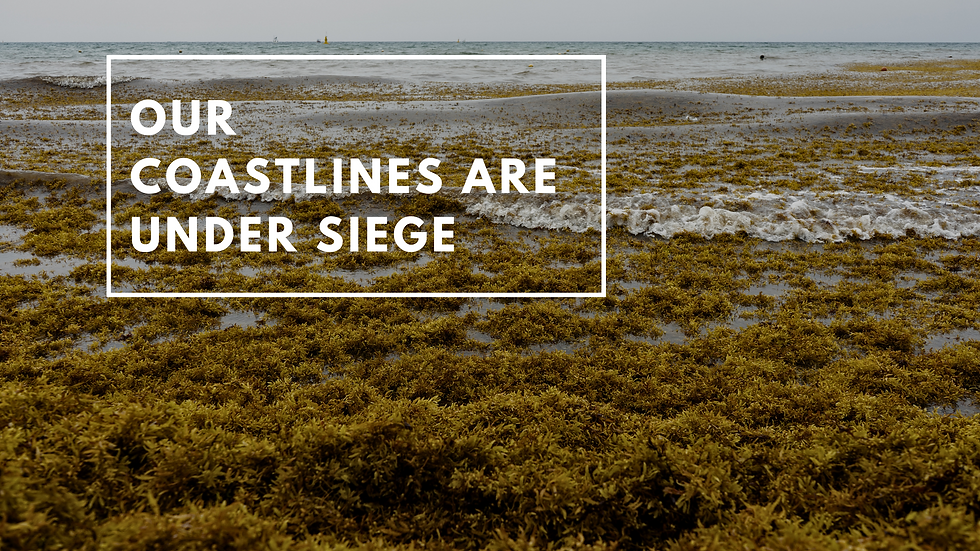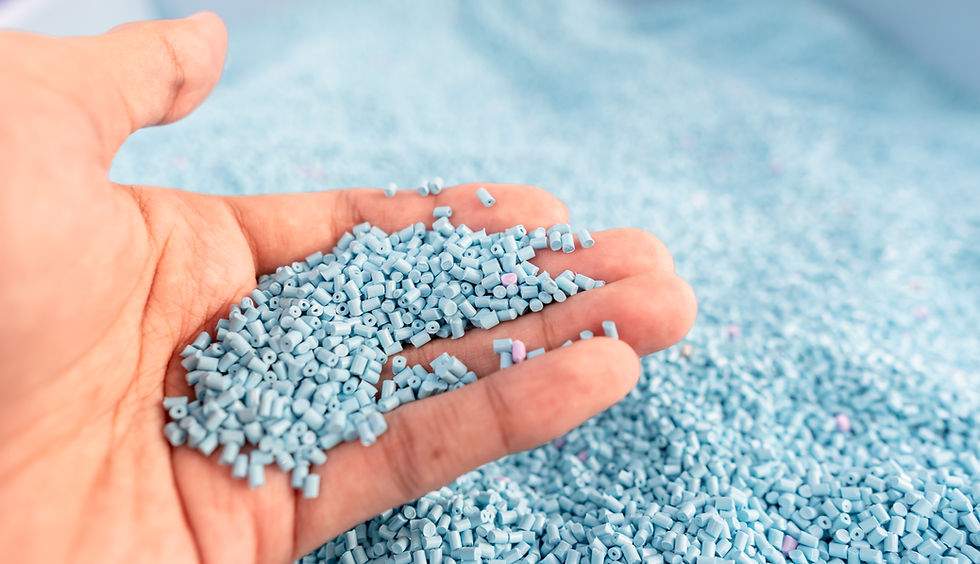Feature Story: Tackling the Sargassum Surge
- SLUNCF
- Jul 29
- 3 min read
The rising tide of Sargassum seaweed has become a pressing challenge for our coastal ecosystems and economies in the region. This year, the Caribbean Islands have experienced a significant increase in Sargassum deposits along their shores with experts warning that this is likely to continue for the foreseeable future. Since 2011, Saint Lucia has experienced Sargassum influxes along its coastlines. However, it is worrying as these invasive seaweeds have become increasingly pervasive, reaching coastal areas that normally would not have been impacted, such as Vigie, Soufriere and Savannes Bay and even the Castries harbour.
The impact of this Sargassum surge along the coastline has brought much disruption to key sectors, including fisheries, tourism, maritime transport, waste management and coastal infrastructure. When the fresh Sargassum begins to break down, which can persist for months, hydrogen sulfide gas is released into its surroundings giving rise to environmental and health risks, especially in high concentrations. Oxygen and sunlight are very critical for the health of marine ecosystems, therefore Sargassum has been linked to the deaths of many fish species, seagrass beds and mangroves.

Nevertheless, there are some positives to this brown surge hitting our shorelines. Sargassum serves as a habitat for many other marine species, including crustaceans like shrimp and lobsters. In fact, more than 127 species of fish and 145 species of invertebrates were found to be associated with Sargassum blooms. Additionally, small quantities of Sargassum can help to stabilise beaches and coastlines; when the Sargassum starts to decompose, the organic matter becomes rich in nutrients that can be used to create biofertilizers, or for composting. Even fishers can benefit from Sargassum—it acts as a FAD (fish aggregating device), attracting large pelagic fish like tuna and dorado to congregate and feed, making the Sargassum ideal as bait.
Currently many organisations are mobilising to deal with the Sargassum surge. The Ministry of Agriculture, Fisheries, Food Security and Rural Development—through the Department of Fisheries—has taken the lead in addressing Sargassum influxes. In earlier surges, the Government allocated funds to support cleanup efforts in Praslin, Micoud, and Dennery, which deployed contractors and community groups to remove Sargassum from critical fish landing sites.
The Department of Fisheries, in collaboration with the University of the West Indies’ Centre for Resource Management and Environmental Studies (CERMES), has developed a National Sargassum Management Plan to guide and provide practical guidance for local action. Additionally, region-wide efforts such as the “Improving National Sargassum Management Capacities in the Caribbean” project by the United Nations Development Programme (UNDP), funded by the Government of Japan, are being taken to overcome this issue. Through the UNDP project, funds were mobilised to acquire equipment, enable national environments for protection, restoration and sustainable use of the coastal marine resources, and catalyse cross-sectoral strategies.
So, what can we do to help?

Almost all opportunities for the use of Sargassum require some engagement with technology for extracting and processing decaying Sargassum blooms. Large volumes of Sargassum can be removed with mechanical equipment, and in those cases, it is preferable to use machines with large soft tires than tracked vehicles to drive along the sensitive beachscapes.
However, small-scale manual clean-ups were found to be just as effective. It can be done by raking and transporting the Sargassum in wheelbarrows, garbage bags or large tarps. This method is very flexible and can be used in a variety of locations with any number of people. But we must be careful to avoid excessive cleaning of affected beaches, as this can interfere with the lives of birds and nesting of sea turtles.
Sargassum surges are a pervasive environmental issue, but offer a unique opportunity for climate action. Join a community group to participate in existing clean-up activities or create your own initiatives by applying for grants to support your effort. These small actions you take will have lasting impact on human and environmental well-being, in the long run.



Comments